The Fujica Compact Deluxe is a 35mm Japanese rangefinder from the late 1960s that is well-built and has a sharp and contrasty f1.8 4.5cm Fujinon lens. Due to its relative rarity it has so far avoided much attention, but I believe it deserves to be considered as one of the top rangefinders of its era. This is not an in-depth, scientific review but my personal views of the camera based on real-world use, having run a few rolls of film through the camera under a range of different conditions.
The top 10 35mm Japanese rangefinders
There are many models that are worthy of consideration in any Top 10 list of fixed lens 35mm Japanese rangefinders produced during the 1960s and 1970s. From the Canonet QL17 and Olympus 35RC to the Yashica GSN Electro 35 and Minolta Hi-matic E, these cameras combine relatively compact proportions with high-quality performance. This list of 35mm rangefinder cameras by the excellent JapanCameraHunter provides a great overview.
However, there are some high-quality cameras that seldom appear on these list of popular rangefinders – and I was lucky enough to find one of them recently: the Fujica Compact Deluxe 35mm rangefinder.
Fuji – a history of photographic excellence
In recent years, Fujifilm has become more widely appreciated again thanks to the success of its APSC digital camera lines – the fixed lens X100 series and its interchangeable XPro, XE and XT series. These systems have gained a good reputation amongst many photographers because of their design, ergonomics, sensor quality and lens range (and quality).
Even as a photographer who does not (currently) use digital Fujifilm cameras (although I still have the lovely little Fujifilm Finepix F11 compact) I can appreciate how the company seems to have a very photographer-centric view of its products. You can see this, for example, in the quality and focal length options of its prime and zoom lenses, and how soon they were available after launching new camera bodies (something a few other manufacturers – are you listening Sony? – could learn from). It is also evident from the way they are constantly adding new facilities to even their older digital cameras through frequent firmware updates.
This focus on photographers clearly comes from a long history of producing high-quality and well-regarded films and cameras – across all formats. Many photographers began learning their skills on SLRs such as the Fujica STX-1 in the 1970s and 1980s, the company produced some amazing medium format rangefinders, and Fujifilm has always been renowned for the particular ‘look’ to the images the film produces.
The Fujica Compact Deluxe – a rare beast
In the late 1960s Fujica produced a line of well-regarded (and at the time relatively expensive) 35mm rangefinders. Probably the best known of these are the Fujica 35 auto M and Fujica V2.
I only became aware of Fujica’s 1960s 35mm rangefinders when I spotted a Fujica Compact Deluxe sitting on a shelf in a local secondhand shop. Picking it up, I could tell from the look and finish that the camera was high quality and well made – but what really caught my eye was the lovely-looking lens on the front, marked with “Fujinon 1:1.8 f=4.5cm Fuji Film”. On the back, the camera proudly states its provenance: “Made in Japan by Fuji Photo Film Co., Ltd.”.
Although a quick internet search produced few results, and even though its meter was not working (which I was hoping was just due to dead batteries – it turned out it was due to dead batteries plus a broken contact in the battery chamber), I decided to buy the camera.
Having bought the camera, and despite a lot of digging around on the web, there wasn’t much information available about the Fujica Compact Deluxe. This is probably due to the model’s relative scarcity – it was only made from 1967-1970. The lack of good information or reviews about the Fujica Compact Deluxe is partly why I thought I would put this “review” of my thoughts about the camera up on my blog.
A classic rangefinder – with a few quirks
The Fujica Compact Deluxe is similar in look and functionality to many of the other fixed-lens Japanese rangefinders of the 1960s and 1970s. My camera did not come with an instruction manual but there is one available online here – Fujica Compact Deluxe Owner’s Manual.
Front (showing Fujinon 1:1.8 f=4.5cm Fuji Film lens):
Back (showing viewfinder, focusing thumbwheel on top right and frame indicator):
Top (showing distance indicator and external meter):
Bottom (showing film advance lever on bottom plate and ISO setting on lens barrel):
Sides (showing battery compartment on top left side and back release catch on lower right side):
It has clean, simple lines with a classic black leatherette and chrome body, made reassuringly solidly out of metal throughout (with just a few bits of black plastic trim). The camera feels good in the hand and has some weight but is not too heavy to carry for long periods.
The leaf shutter in the lens is quiet with no noticeable shutter-lag, and makes just a small “snick” when released – making it great for unobtrusive use on the street or in quiet areas. The shutter has manual speeds from 1/500s to 1sec (and bulb). The aperture in manual mode ranges from f1.8 to f22 (in full stops), alongside auto aperture mode.
Whilst not as small as some later rangefinders (such as my Ricoh 500ME), it is smaller than many 1960s rangefinders and smaller than contemporary 35mm SLRs (such as Pentax Spotmatic F). It is not really a pocket camera, especially given the length of the f1.8 lens protruding from the front, but is well-suited to a neck or wrist strap.
Size – compared with Ricoh 500ME:
Size – compared with Pentax Spotmatic F:
The Fujica Compact Deluxe viewfinder is large, crisp and clear – with a bright and fairly large yellow rangefinder rectangle in the centre. The camera has the benefit of both metered manual and shutter priority modes, with viewfinder displays of suggested aperture (in auto aperture mode), and an over/under exposure warning indicator.
Viewfinder (showing framing lines, aperture bar at top, rangefinder rectangular patch in centre, white circle on right turns red to indicate over/under exposure):
However, the Fujica Compact Deluxe does have a few quirks that set it apart from many other rangefinders:
- The first is that you focus the lens using a knurled thumb-wheel that protrudes on the top right of the camera back – with the selected distance displayed with a clear dial on the top of the camera. This falls naturally under the right thumb and leaves just the aperture and shutter controls around the lens – making these controls less cramped and easier to use.
- Next to the distance indicator on the top of the camera you can see another of the Fujica’s quirks – a small meter display that works in manual and shutter priority modes. You also need to use the external meter in manual mode (as the viewfinder aperture indicator works only in shutter-priority mode). I have not done much ‘street’ shooting with this camera yet, but the top-plate displays would both be very useful if shooting ‘from the hip’.
- Another feature is a bottom mounted film advance lever – which I find a little awkward as it requires moving your right thumb down from the focusing wheel to advance to the next frame and thus increases shot-to-shot time. The position of film advance lever also makes it harder to put the camera in a generic (or other brand) case – if you don’t have the model’s specific case (which I don’t unfortunately).
- One little bugbear of mine (especially as I do not have a case) is that the shutter release does not have a lock – so it is quite easy to accidentally release the shutter if the camera is hanging by your side. You can overcome this by not advancing the film until you are ready to take a shot (but this prevents quick ‘reaction’ shots).
- Oh yes, and the camera doesn’t have a meter – it has an “electric eye” according to the manual 😉
External top meter (or ‘Electric eye’):
This camera’s size, functionality and ergonomics make it one of my favourite cameras for day-to-day film shooting. Some cameras just feel ‘right’ – and this is one of them (in my hands, anyway!).
It’s all about the lens: “The best we’ve ever made”
One of the useful pieces of information I found on the Internet about the Fujica Compact Deluxe was this copy of the original US advert for the camera uploaded by Flickr user Nesster:
The one thing that stands about for me in the advert is FujiFilm’s claim that the 6-element f1.8 lens is “The best we’ve ever made. Has the fine-line resolving power to give you extraordinary detail and contrast in both colour and black and white”. So how does the camera’s performance live up to (nearly) 50-year old marketing spiel? Read on to find out.
A sharp lens that renders beautifully
In short, having run a number of colour and redscale 35mm films through this camera over a couple of months, I would definitely agree with Fuji. At the time the camera was on sale, this was a sharp lens that could resolve details well as many of its contemporaries – and to this day it remains a lens that can hold its head up high, even compared with many modern lenses.
But it’s not all about absolute sharpness with this lens for me. Used wide open, or nearly wide open, the lens renders beautifully in my opinion – with a sharp in-focus zone and a lovely appearance to its out-of-focus areas (bokeh).
The only real downside is that the lens, despite being multi-coated, is prone to flare and lose contrast when used into the sun or with the sun near the edge of the frame. A decent vented hood may well help performance into the sun. This is not particular to this lens, as many lenses of the 1960s and 1970s do not perform very well into the sun – it goes to show how well modern mulit-coatings deal with this issue.
Image quality
Rather than going into excruciating detail about the performance of this lens, I’m now just going to show some of the images I’ve taken with the camera and you can make up your own mind. You can view a full set of images taken with the Fujica Compact Deluxe in this Flickr album.
All of these were shot using AgfaPhoto Vista Plus ISO200 35mm film (shot at ISO200 for colour photos and ISO50 for reversed/redscale shots). The processing was done at a local hypermarket so is not the best quality and they only provide 2.2 megapixel scans – so the resolution of these images is likely to be far less than the actual resolution on the negatives. I have done minimal post-processing to the images – just a little contrast and saturation boost in some cases.
Click here if you just want to skip to my summary about this camera.
Standard colour images
[Click to view images at higher resolution on Flickr]
A walk around a Victorian cemetery, Southsea
New and old Portsmouth
Redscale images (using home-reversed film)
[Please note: reversing the film to shoot it redscale increases visible grain and affects contrast and colour balance]
By the sea – Milton Locks, Portsmouth
Clarence Pier, Portsmouth
In summary: One of the best Japanese rangefinders?
In summary, I think that the Fujica Compact Deluxe deserves to be considered amongst the best fixed-lens rangefinders of its period. It is well built, easy to use and its beautiful lens is capable of delivering stellar image quality.
I can only think that its relative scarcity means that not many people have come across it or used it recently. And I think that’s a real shame – although as it remains an undiscovered gem, prices for this camera are still quite low compared to comparable more popular Japanese rangefinders.
Some of the shots I have taken with my camera are some of my favourite photos, and it always brings a smile to my face when I hold the Fujica Compact Deluxe to my eye to capture an image. And that’s probably the best recommendation I can make about this camera.
—-
PS: Please note that all images (apart from the advert) displayed on this page are (c) Howard Hurd and must not be reproduced or reused without my permission. Thanks 🙂
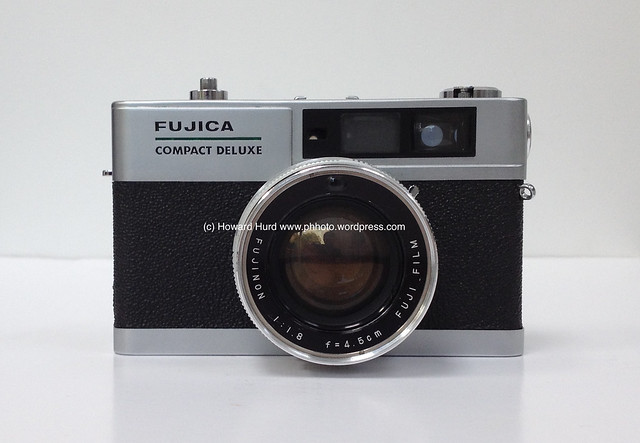
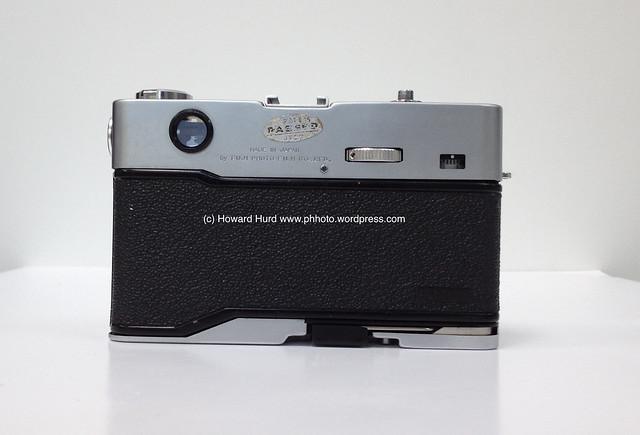
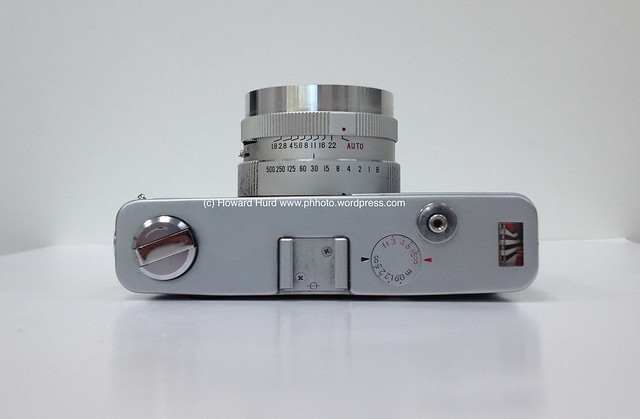
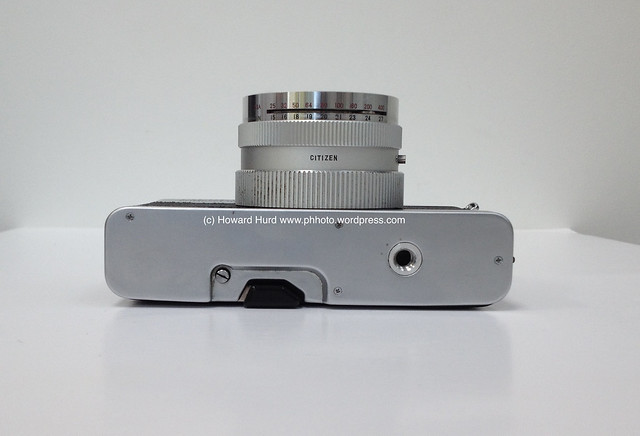
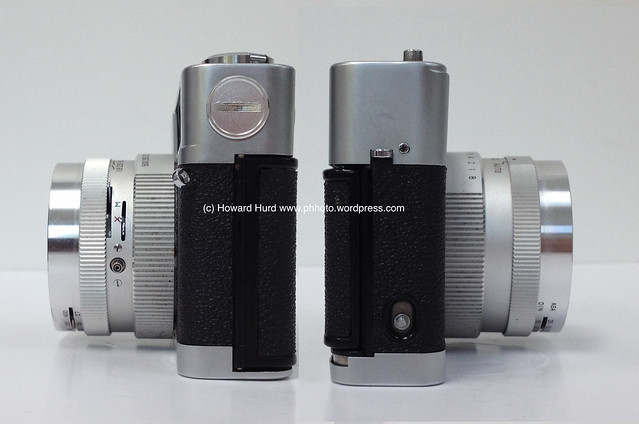

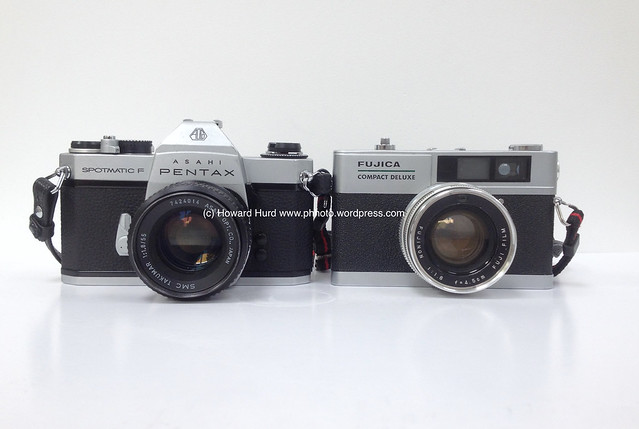
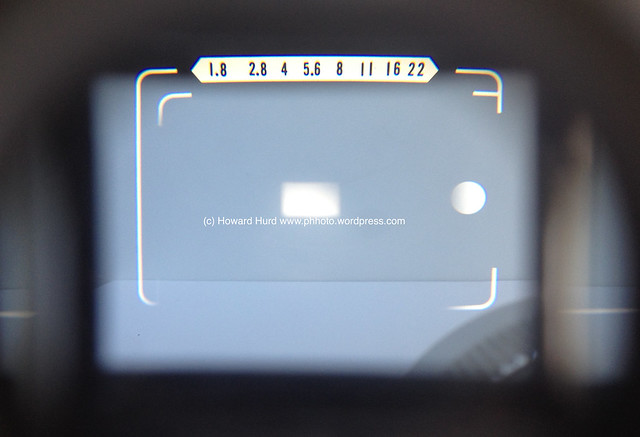
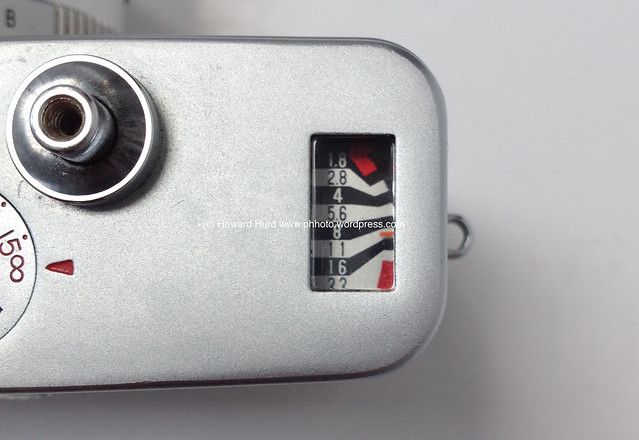
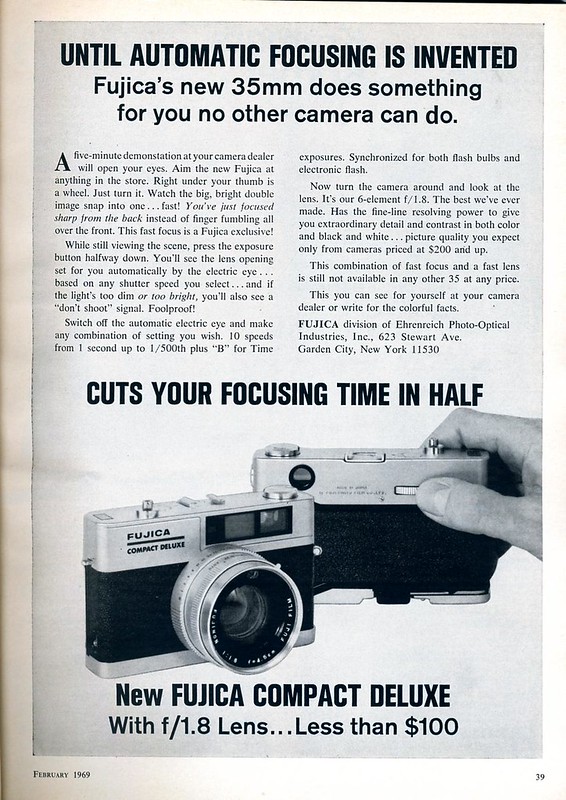

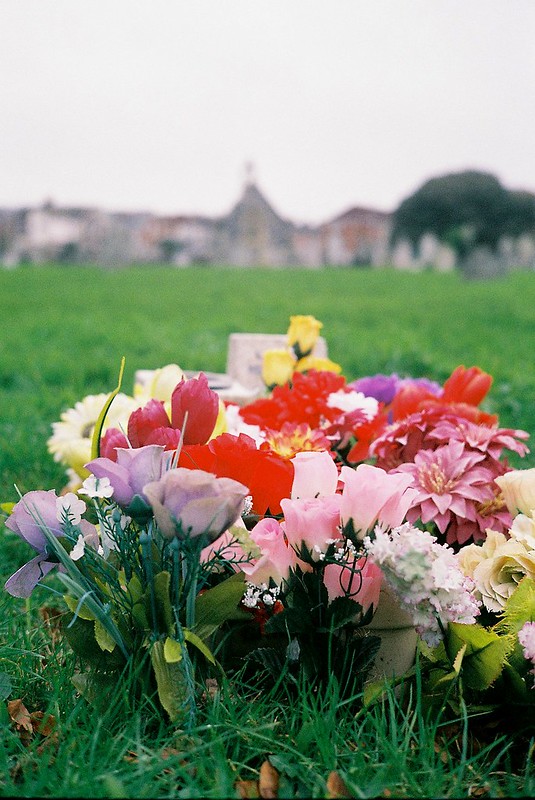
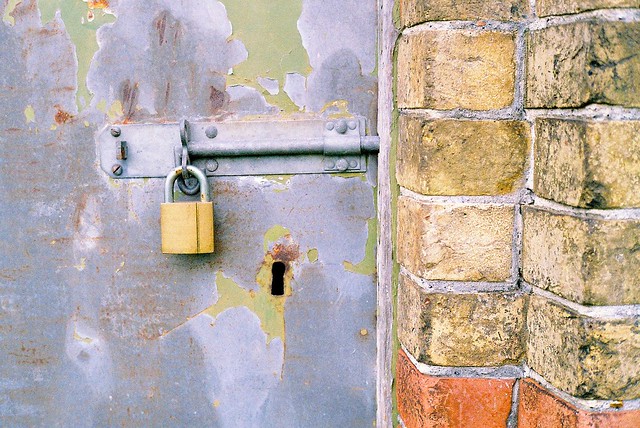
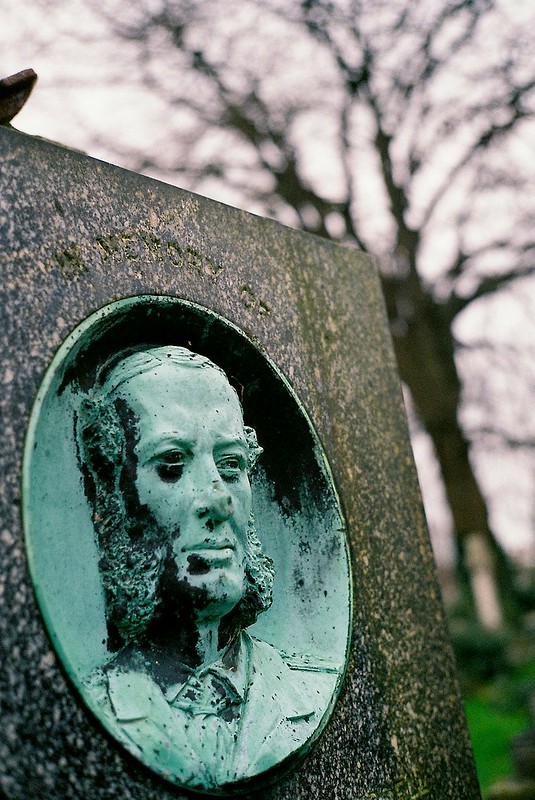
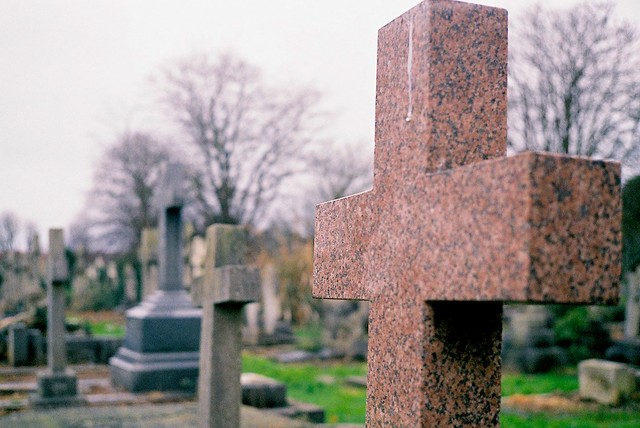
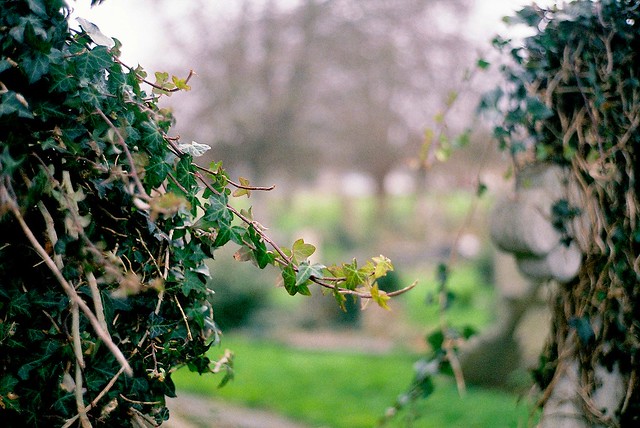
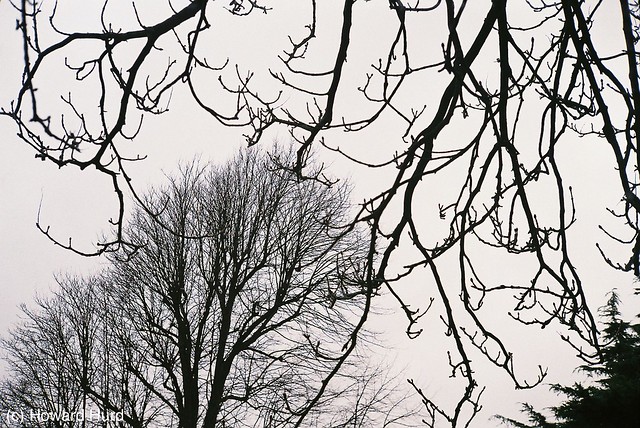
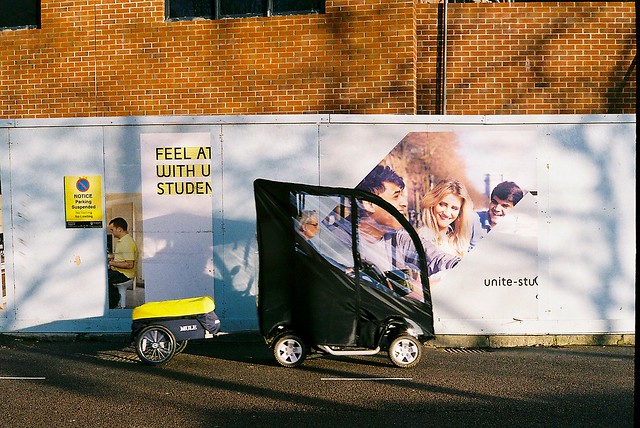
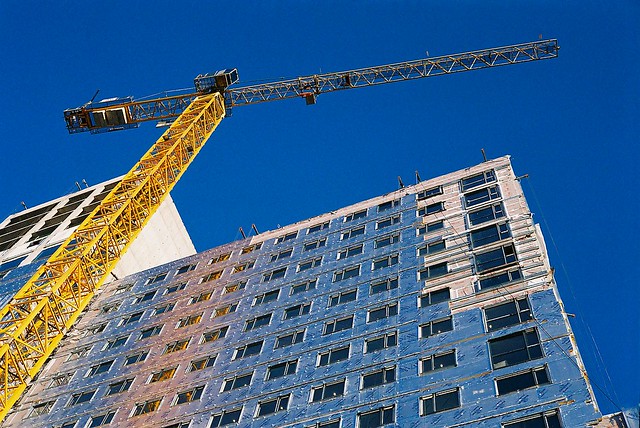
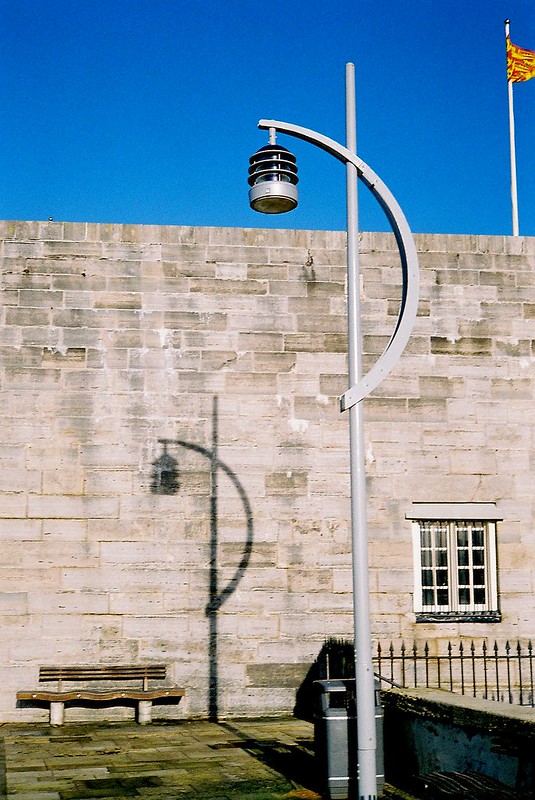
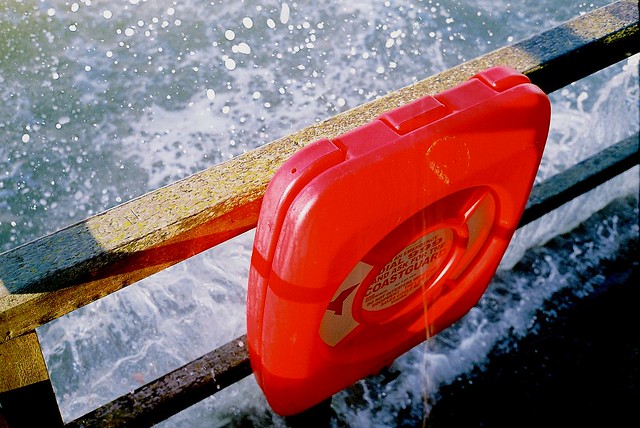
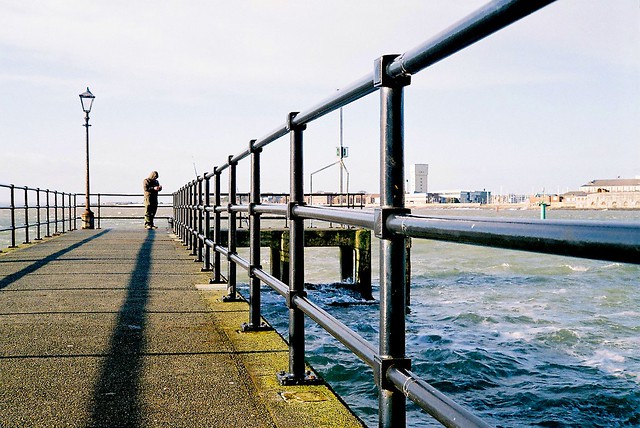
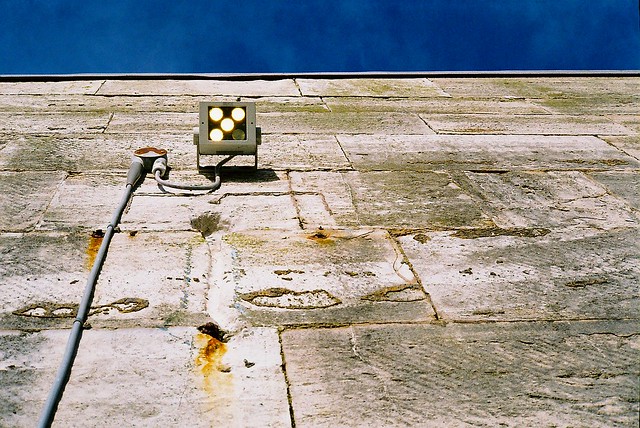
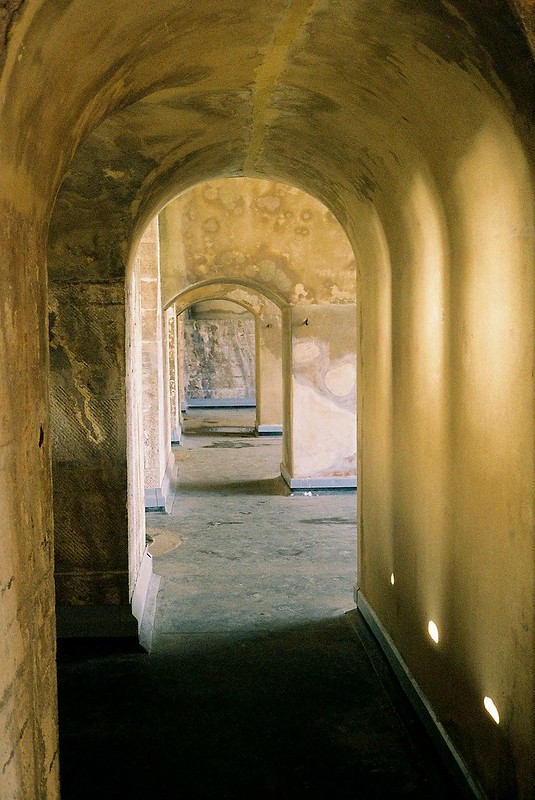
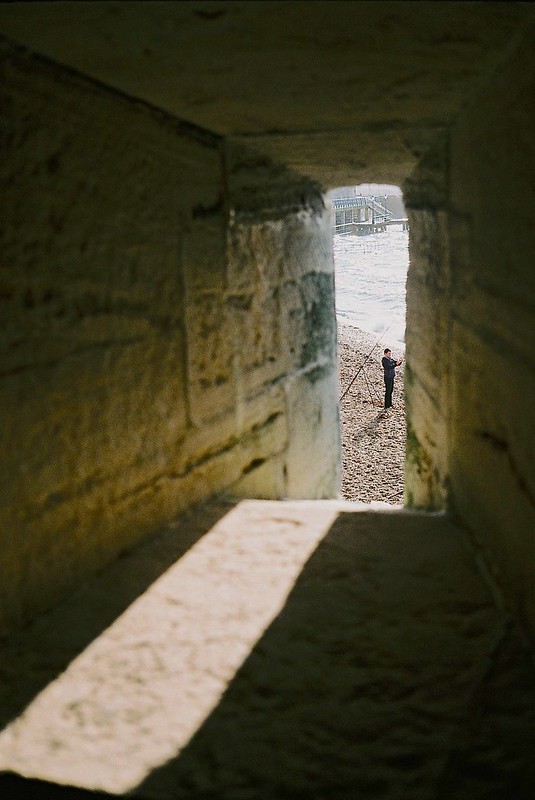
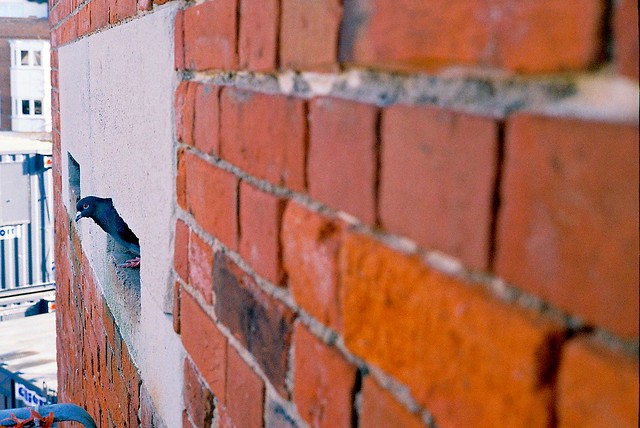
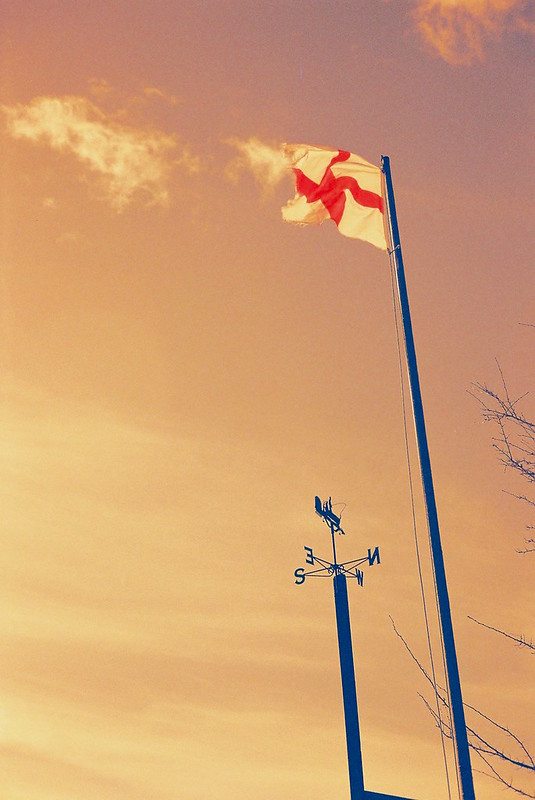
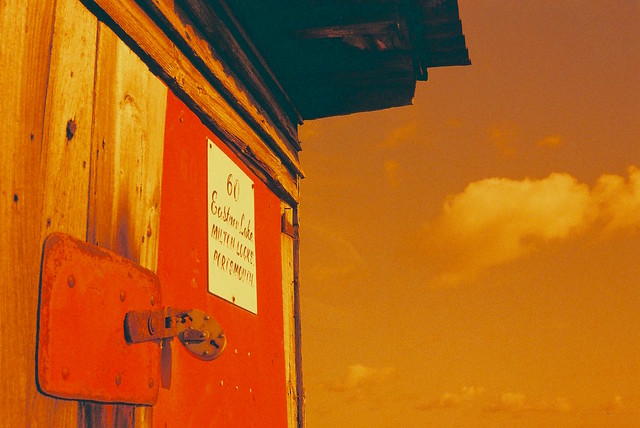
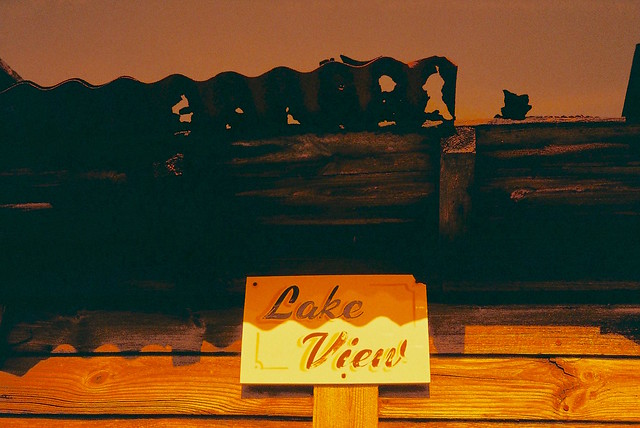
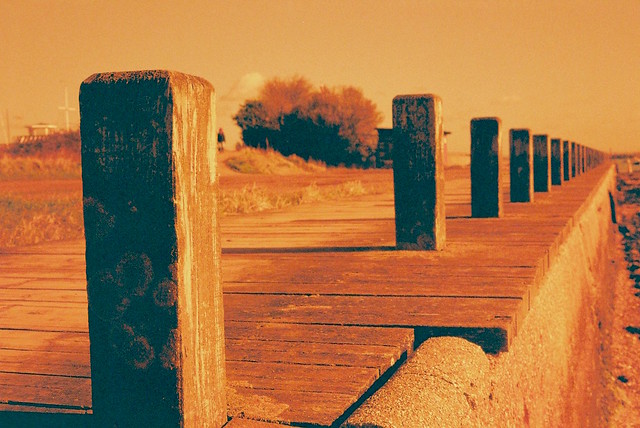
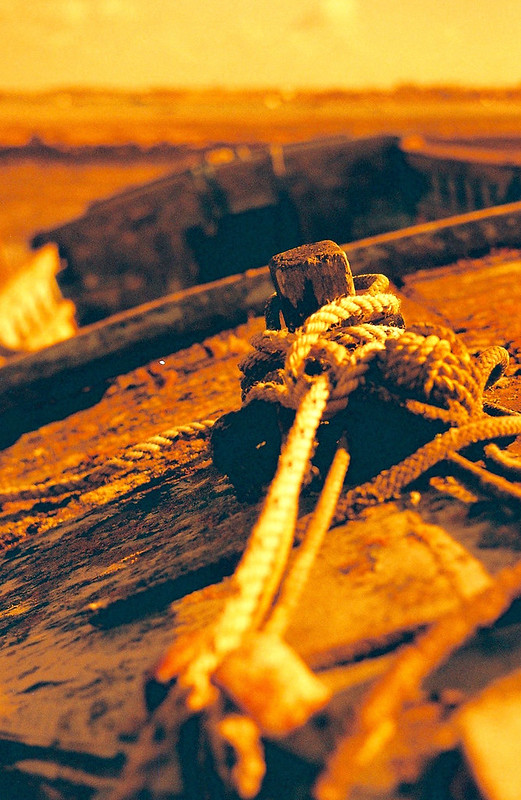
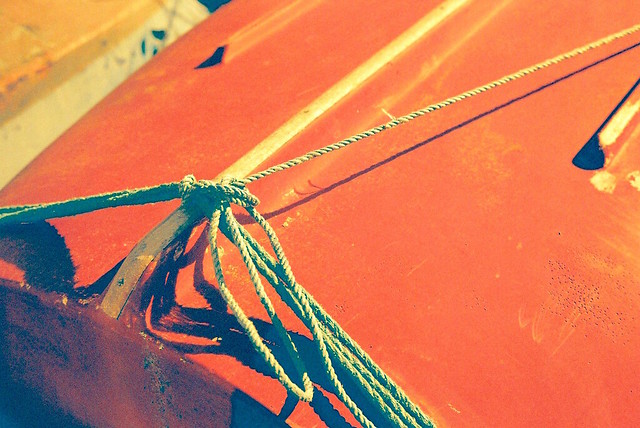
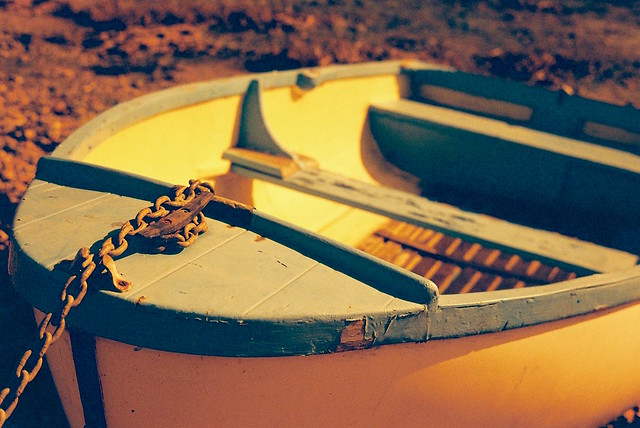
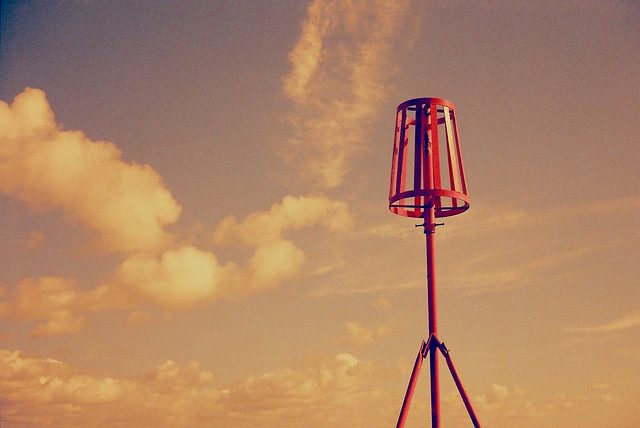
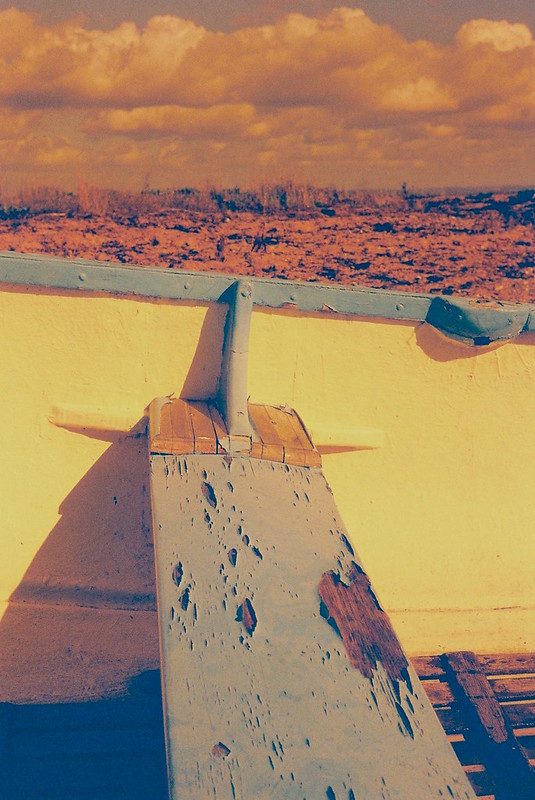
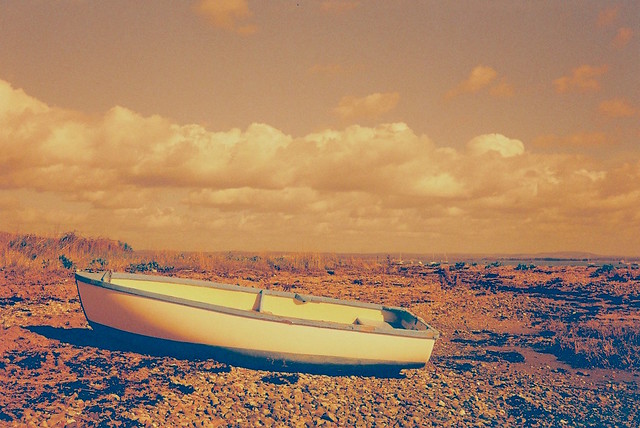


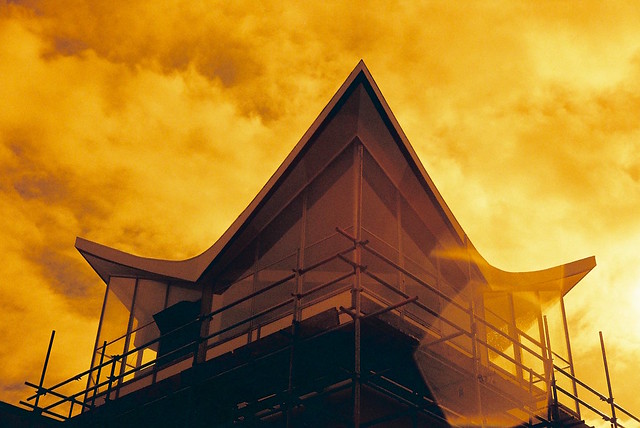
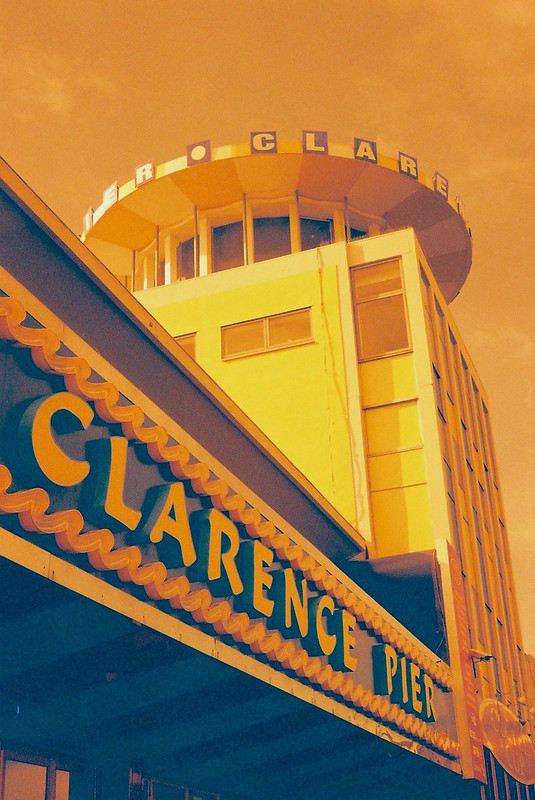
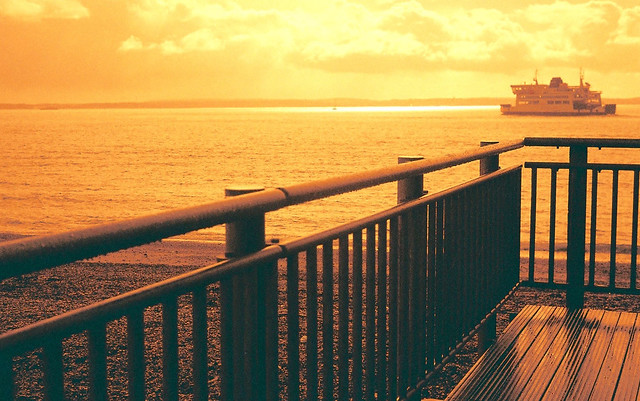
Excellent review Howard, beat me to the punch! 🙂 Between the two of us we will double the price of the camera.
My review which will appear on http://www.35mmc.com will have more details about the history and origins of the camera. I went to 4 amazing waterfalls last weekend and have only a few shots left to take before I develop and scan the images. If the lens is as good as your shots I should have some really amazing images to share in my review.
LikeLike
Thanks Cheyenne – looking forward to reading your review. As you had all of that great info from Fujifilm Australia I thought I’d leave the history and origins to you 🙂
LikeLike
Nick Trop at Rangefinder Forum has been a fan of the Compact Deluxe for some years and has written about it, as have one or two other members from memory. But it’s good to see some more words and photos from one, so thank you. I’m not surprised about the performance of the Fujinon lens, or its propensity to flare. The very first of a now very large number of classic cameras I have purchased over the last few years was a Fujica 35-EE circa 1961. I managed to successfully rectify several issues with it on arrival ex-eBay including completely replacing the optical prism and setting and adjusting the rangefinder. This set me on the path to repairing other cameras and is how I’ve ended up where I am today (wherever that is). The specification of this model is appealing. There were a couple of lens and shutter options. Mine features the 45mm f/1.9 Fujinon lens in a 1/1000 leaf shutter with full electronic synchronisation, and the lens is an excellent performer, with very sharp and “realistic” (for want of a better term) rendition. I don’t use it as often as I should but will take it out again soon to finish off the roll of colour negative that has been in it for too long. I do not have many images made with it online, but here is one such recorded, appropriately, perhaps, on Fujifilm Superia 400 colour negative.
Cheers
Brett
http://www.redbubble.com/people/brogers/works/8852047-winter-victoria-dock-hobart
LikeLike
Hi Brett,
Thanks for the comments and info.
It’s always good to hear from fellow Fujica rangefinder users!
I think I had come across Nick’s posts from a few years back about the Compact Deluxe on the Rangefinder Forum (eg https://www.rangefinderforum.com/forums/showthread.php?p=2459629 ) but I don’t tend to hang round forums that often.
I couldn’t find much that was more recent about this great and under-appreciated rangefinder, which is why I thought I’d put up a more detail user-review.
Your 35-EE sounds like a sweet little camera. Your harbour shot is lovely – crisp and detailed. I think with better scanning the negatives I have taken would really ‘sing’ like that. Fuji certainly know how to make a good lens (as shown by current lens range for digital cameras!).
Cheers,
Howard.
ps The ‘Agfa’ branded film I used is apparently made by Fuji (says Made in Japan on the box) – so I’m using Fuji+Fuji too 🙂
LikeLike
What a great read! I’ve been trying to get my hands on one of these for awhile. In the meantime, the Fujica V2 is a fun and fantastic camera to use as well.
LikeLike
Thanks glad you enjoyed it – the compact deluxe is lovely but rare !
LikeLike
Pingback: Back in the USSR - a Fed4 & Industar И-61 lens review - Guest post by Howard Hurd - 35mmc
Howard I had never heard of red scale reversal until I read your guest review of the Fed4 on Hamish’ s site this morning. Do you load the film backwards by removing it from the cassette and reloading it with the emulsion side towards the light?
The Fuji Compact produces excellent images with character in your hands.
So many fixed focus rangefinders were made in Japan during those years. My father had a Petri 35 that was a handsome camera that took beautiful slides – slides were popular then, slide shows of vacations etc – until he some how broke it at which point my mom took over with a Kodak Instamatic 126 which she used for the rest of her life.
In the past 10 or so years I have bought some of these Japanese rangefinders used from ebay or thrift stores, yard sales only to find that most of them were not functioning properly and the results were disappointing. The Yashicas in particular. The added problem is that there is nobody to repair them even if you wanted to spend $60 to repair a $2 yard sale find.
Most of these were (re) donated to thrift stores. A few I still have. The Beauty camera is quite good though a little heavy.
On the Fuji the focus wheel is one of those ideas that probably came from the Contax . That I never really liked but got used to gradually. It makes you wonder how lefties deal with it or someone with a problematic right hand like myself.
Thanks for the review.
LikeLike
Hi Mike – thanks for the kind words 🙂 I am a left-hander and I did find the focus wheel took a bit of getting used to but I love the Fujica Compact Deluxe as it produces such lovely results.
To hand reverse the film for redscale the easiest way is to get a spare / waste 35mm film cartridge with a little film still attached to the spindle. In the light you can then cut the ends of the 2 films and reverse and tape the ends of the film together. Then in total darkness or using a changing bag you can rotate the spool on the ’empty’ cartridge to transfer the film from one to the other. This avoids handling the film directly. When the film is transferred across you can then turn on the light / take the cannisters out of the bag and then cut the reversed film and cut a new leader. (And you can save the now empty cannister with its bit of film for the next time you want to reverse a film). When you expose the redscale film you need to add c.2 stops (eg expose reversed 200iso at 50iso). If you google homemade / handrolled redscale you should be able get some more advice – or just ask 🙂
Howard.
LikeLike
Howard I take that to mean you adjusted to having to use the ‘wrong thumb. ‘
The perfect camera for left hand is the weltini, a quite good camera that’s weird to use as it’s basically upside down with the shutter release and film advance underneath. Good lens too but hard to get used to.
LikeLiked by 1 person